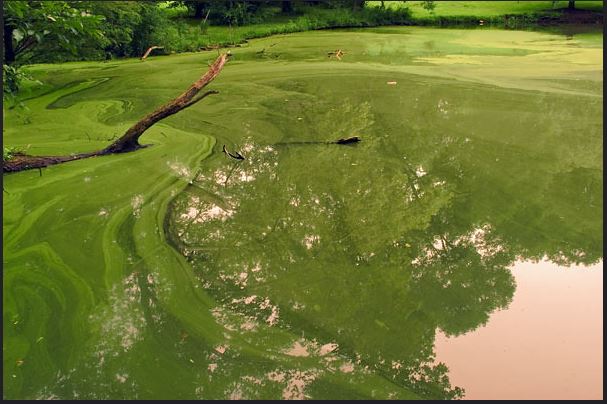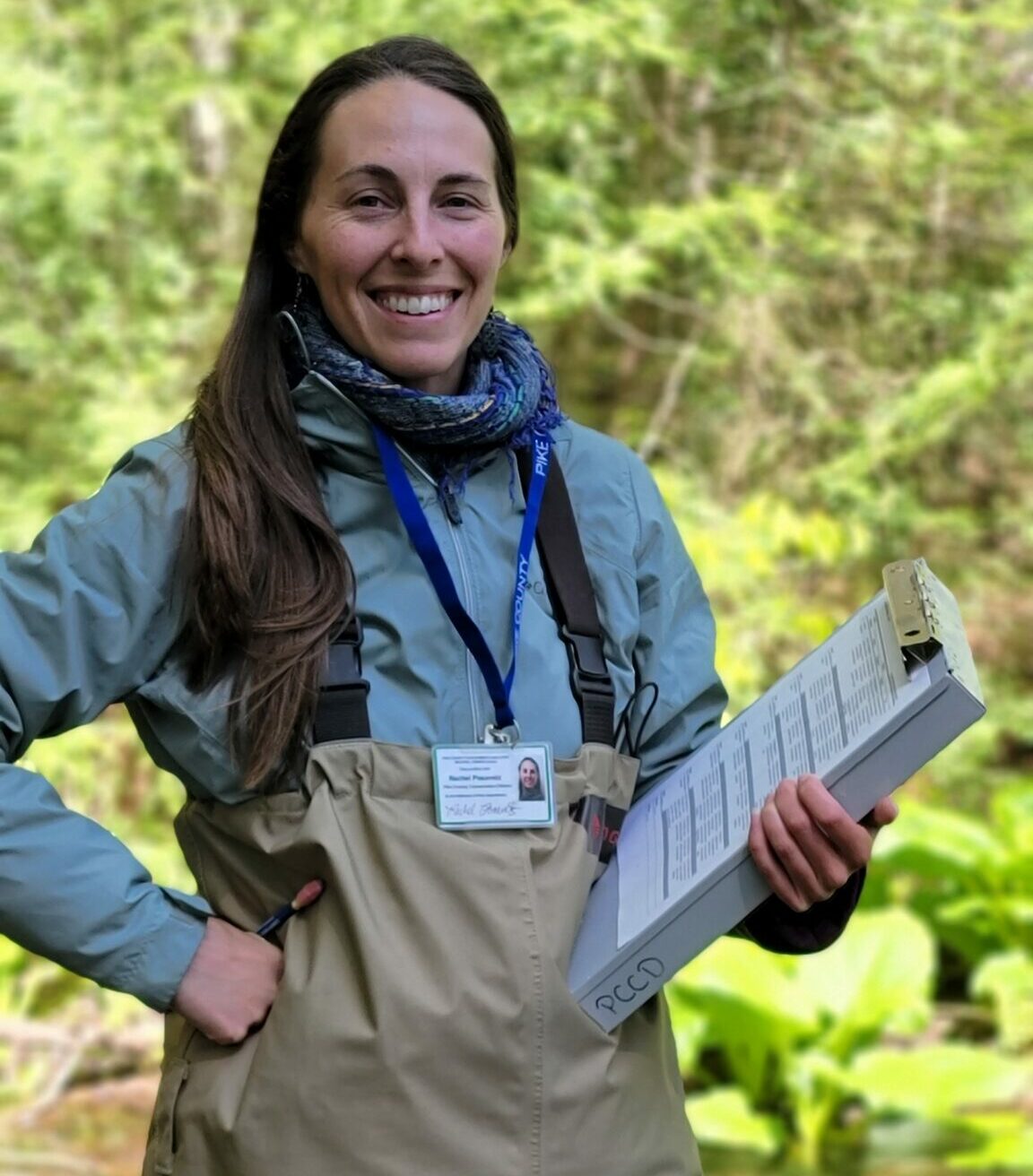News

Harmful Algal Blooms (HABs)

By Rachel Posavetz, Watershed Specialist
Article topics: What are HABs?, what is important to know about them, what to do if you think you spot a HAB.
Harmful algal blooms are caused by cyanobacteria (“blue-green algae”) which can produce toxins that are harmful to humans, pets, and livestock, and can negatively impact drinking water, swimming and fishing recreation, and aquatic ecosystems. These algal blooms are referred to as HABs (or CyanoHABs) and are typically found in slow-moving waters during the optimal conditions of warm temperatures and high nutrient inputs. Climate change and stormwater runoff contribute to these conditions. There are many types of cyanobacteria and depending on the type, can produce one or more of the 4 major types of cyanotoxins common in the U.S.
Not all algal blooms are harmful; only some are caused by cyanobacteria. Residents frequently mistake stringy green filamentous algae, pond scum, and aquatic vegetation such as duckweed for HABs. Cyanobacteria has a much finer texture and grows in a thin film. HABs form just below and on the surface of the water and can appear in various forms likened to: fine green streaks, granular clumps, pea soup, and spilled paint. Visit the resources listed below to learn more about how to visually recognize a potential HAB.
Exposure to HABs can cause a range of human health impacts not limited to rash, flu-like symptoms, gastrointestinal or respiratory difficulty, organ damage or even death, and methods of exposure range from skin contact, ingestion, inhalation of air-borne water particles and consuming affected fish or shellfish. For a more thorough list of symptoms and health impacts visit: PA Dept of Health: HABs or for health-related questions, contact the Pennsylvania Department of Health at env.health.concern@pa.gov.
Pennsylvania is in the process of developing programs and resources to address HABs through the “Pennsylvania HABs Task Force”, a partnership between the Department of Environmental Protection, Department of Health, and many other state agency partners, which can be found at www.dep.pa.gov/HABs. Thresholds for human exposure based on concentrations of certain cyanotoxins present in a waterbody can be found here to help make management decisions regarding the risk level of a HAB. To report a potential HAB, or for questions about HABs, contact the Pennsylvania HABs Task Force at HABs@pa.gov.
You can also reach out to your lake association, state park office, or local Conservation District for further information. If you are unsure of whether a particular waterbody you plan to recreate on or nearby is currently experiencing a HAB, it is safest to avoid those activities for the time being. For additional info on HABs response strategy and resources neighboring states have developed, check out the resources for New Jersey and New York below.
Lastly, most types of algae are beneficial to aquatic ecosystems when their populations remain balanced. Algae produce about half of Earth’s oxygen and are the photosynthetic base of most aquatic food chains, similar to the role of plants on land. The best option for controlling algal bloom impacts is to manage stormwater runoff and nutrient (phosphorus) inputs, protect drinking water sources, learn more on how to keep yourself safe from HABs, and support the continued research on HABs.
HAB Info to Keep in Mind:
- algal blooms are a natural occurrence worsened by human activity
- the presence of cyanobacteria does not necessarily mean toxins are present
- cyanobacteria cells themselves have endotoxins which have been shown to cause allergenic reaction in some people
- there are 4 major types of cyanotoxins common in the U.S., produced by many types of cyanobacteria
- HABs are a temporary condition of a waterbody, however cyanotoxins can remain active in the water after a bloom clears and can be present in the dried scum that washes up on shorelines
- the full extent of health issues associated with cyanotoxin exposure is uncertain, as current research is expanding on this topic

Resources To Learn More About:
EPA HABs: https://www.epa.gov/cyanohabs
PA SeaGrant factsheet: https://seagrant.psu.edu/sites/default/files/BE-AWARE-HABS-one-page-3-edit-reduced-.pdf
PA HABs Task Force: www.dep.pa.gov/HABs
Health-related Questions: env.health.concern@pa.gov
CDC HAB-Associated Illness : https://www.cdc.gov/habs/general.html
NJ-DEP HABs: https://www.nj.gov/dep/hab/
NY-DEC HAB photos: https://www.dec.ny.gov/chemical/81962.html
Cyanotoxins: https://www.epa.gov/cyanohabs/learn-about-cyanobacteria-and-cyanotoxins
Penn State Extension HABs video: https://extension.psu.edu/harmful-algae-blooms-habs
Tools for Waterbody Managers: https://www.epa.gov/cyanohabs/epa-tools-waterbody-managers-monitor-and-respond-cyanohabs
Algae Facts: https://www.livescience.com/54979-what-are-algae.html
